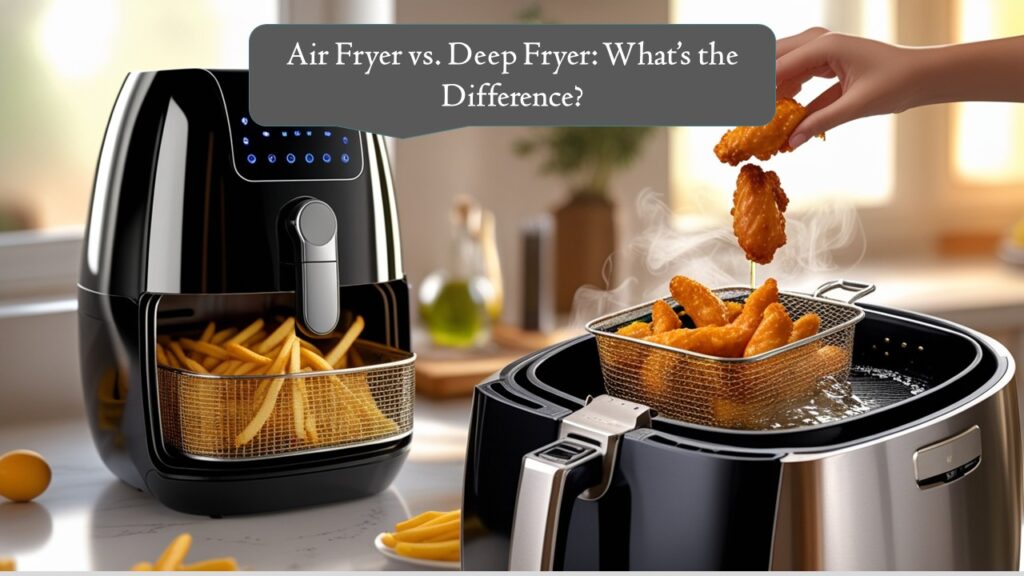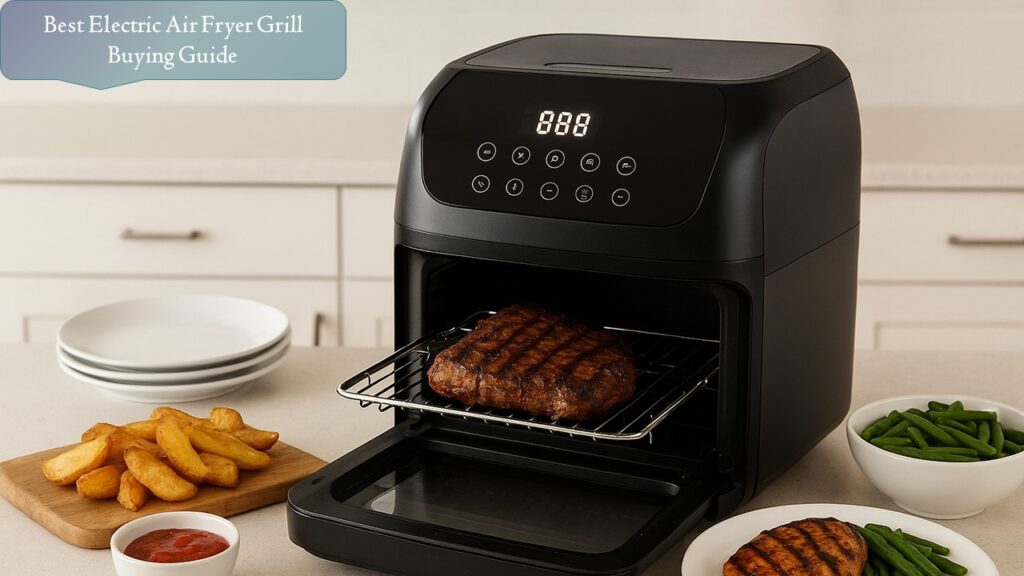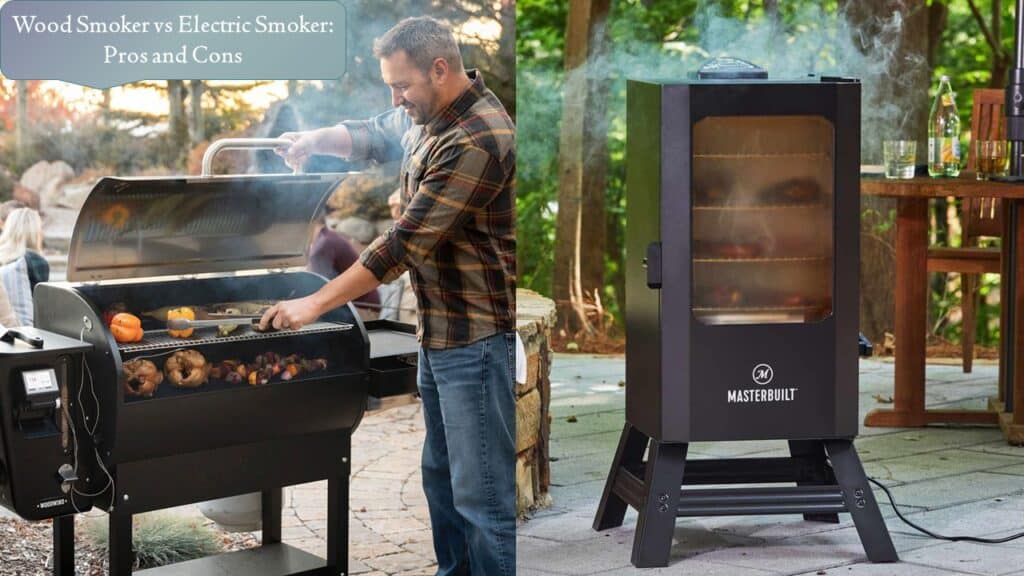Fried food has a special place in nearly every kitchen — from crispy fries and crunchy chicken wings to golden onion rings. But today, there’s more than one way to get that perfect crunch. With the rise of air fryers, many households are rethinking the traditional deep fryer.
While both appliances aim to deliver that satisfying crispiness we love, they use completely different cooking methods. One relies on hot oil, while the other uses circulating hot air — and that difference changes everything: taste, texture, health impact, and even cleanup.
In this article, we’ll break down the key differences between air fryers and deep fryers, explain how each works, compare results, and help you decide which one best fits your kitchen and lifestyle.
What Is an Air Fryer?
An air fryer is a compact countertop appliance that cooks food using rapid air circulation. Think of it as a mini convection oven — it surrounds food with hot air, creating a crispy layer on the outside while keeping the inside tender.
Despite the name, an air fryer doesn’t actually fry food in oil. Instead, it replicates the texture of deep-fried dishes with just a fraction of the fat — often using only one tablespoon or less of oil.
How It Works:
- The air fryer heats up using an internal heating element.
- A powerful fan circulates the hot air around the food at high speed.
- The circulating air cooks and crisps the surface of the food, giving that “fried” effect.
The result? A crunchy exterior similar to deep frying — but with significantly less grease and fewer calories.
- 2 FOODS, 2 WAYS, AT THE SAME TIME: Eliminating back-to-back cooking like a traditional single-basket air fryer with 2...
What Is a Deep Fryer?
A deep fryer is the traditional way to fry food. It cooks by fully submerging the food in hot oil, usually between 350°F and 375°F (175°C to 190°C).
The high temperature of the oil cooks food quickly, creating a crispy golden crust while sealing in moisture inside.
How It Works:
- The fryer heats oil to a specific temperature.
- You immerse the food in the oil using a basket.
- The oil cooks the food evenly, producing a rich, crunchy texture.
Deep fryers are commonly used in restaurants and homes for classic favorites like french fries, chicken wings, and doughnuts.
However, they require large amounts of oil, can be messy to clean, and add extra fat to your meals.
- PATENTED OIL FILTRATION: Our deep fryer with oil filtration and basket provides automatic oil management, storing oil...
Key Differences Between Air Fryer and Deep Fryer
Here’s a quick comparison before we dive into the detailed breakdown:
| Feature | Air Fryer | Deep Fryer |
| Cooking Method | Uses hot air circulation | Submerges food in hot oil |
| Oil Required | 1 tbsp or less | Several cups (3–6 cups) |
| Texture | Crispy but slightly drier | Crunchy, rich, and moist |
| Taste | Lighter flavor | Traditional deep-fried flavor |
| Health Impact | Low fat and calories | High fat and calories |
| Cooking Time | Slightly longer | Faster due to hot oil immersion |
| Cleanup | Easy, minimal oil | Messy, oil disposal required |
| Odor | Minimal | Strong fried smell |
| Safety | Safer, no open oil | Hot oil risk (splatter, burns) |
Detailed Comparison
Let’s look deeper into how each appliance performs in real use.
-
Cooking Method and Technology
Air Fryer:
Air fryers use Rapid Air Technology — circulating hot air evenly around the food. This process cooks food by convection, not immersion, allowing you to use far less oil.
Deep Fryer:
Deep fryers depend on conduction and oil immersion. The hot oil quickly transfers heat to the food, producing an authentic fried crunch that air fryers imitate but can’t completely duplicate.
-
Taste and Texture
If you’re after the exact flavor of fried food, a deep fryer still wins. The hot oil caramelizes the food’s surface, creating that rich, indulgent crunch and deep flavor we associate with fried chicken or tempura.
Air fryers deliver a crisp, light texture — delicious in their own right but slightly different. Some foods, like fries and wings, turn out great, while others (like battered items) don’t crisp quite the same way.
Verdict:
- Deep Fryer: Authentic taste, oil-rich flavor.
- Air Fryer: Healthier, but texture can be slightly lighter or drier.
-
Health and Nutrition
This is where the air fryer dominates. Since air frying requires up to 85% less oil, it drastically reduces fat and calorie content. It’s a great option for anyone looking to enjoy fried-style food while maintaining a balanced diet.
For example, a serving of deep-fried french fries can have 17 grams of fat, while air-fried fries may have just 3 grams — depending on how much oil you add.
Verdict:
- Air Fryer: Healthier, lower fat, fewer calories.
- Deep Fryer: Higher in fat and calories; best for occasional indulgence.
-
Cooking Speed and Efficiency
Deep fryers heat up quickly and cook food faster because oil transfers heat more efficiently than air.
Air fryers take a few extra minutes to preheat and cook, but they can handle small batches efficiently and don’t require waiting for oil to cool or disposing of used oil afterward.
Verdict:
- Deep Fryer: Faster cooking.
- Air Fryer: Slightly slower but more convenient overall.
-
Cleanup and Maintenance
Air fryers are incredibly easy to clean. The basket and tray are usually dishwasher-safe, and there’s minimal grease buildup.
Deep fryers, on the other hand, require draining, filtering, and disposing of oil — which can be messy and time-consuming. You also need to clean the inner chamber and basket thoroughly to prevent residue buildup.
Verdict:
- Air Fryer: Simple, quick cleanup.
- Deep Fryer: Messy and requires frequent maintenance.
-
Safety and Convenience
Air fryers are safer to use — there’s no risk of hot oil splattering or spilling. Most have cool-touch handles and automatic shut-off features.
Deep fryers carry more risk due to the open oil vat. Burns and spills can happen if you’re not careful, especially when cooking frozen foods or overcrowding the basket.
Verdict:
- Air Fryer: Much safer for everyday home use.
- Deep Fryer: Requires caution and attention.
-
Cost and Energy Use
In 2025, air fryers range from $60 to $250, depending on size and brand. Deep fryers typically cost $40 to $150, but they consume more oil and electricity during use.
Considering long-term savings on oil and energy, air fryers can be more economical over time.
Which One Should You Choose?
Your choice depends on your priorities — flavor or health, authenticity or convenience.
Choose an Air Fryer If You:
- Want healthier meals with less oil
- Prefer quick, easy cleanup
- Cook smaller portions or reheat leftovers often
- Value safety and convenience
- Enjoy a variety of cooking styles (roasting, baking, reheating)
Choose a Deep Fryer If You:
- Love authentic fried food texture and flavor
- Cook in larger batches
- Don’t mind the extra cleanup and oil use
- Occasionally indulge in deep-fried dishes
Many people even own both appliances — using an air fryer for everyday meals and a deep fryer for special treats.
Tips for Best Results with Each
Air Fryer Tips:
- Don’t overcrowd the basket — leave space for air circulation.
- Shake or flip food halfway for even crisping.
- Lightly coat food with oil spray for extra crunch.
- Preheat before cooking for better texture.
Deep Fryer Tips:
- Use a thermometer to maintain oil temperature.
- Avoid overcrowding the basket — it cools the oil.
- Drain food on paper towels to remove excess oil.
- Replace oil regularly to avoid off-flavors.
Final Thoughts:
Both air fryers and deep fryers have their place in the kitchen.
If you crave healthier, hassle-free cooking, an air fryer is the modern solution. It offers convenience, easy cleanup, and significantly less fat — ideal for everyday use.
If, however, you’re a traditionalist who loves the rich, indulgent crunch of true fried food, the deep fryer still reigns supreme for taste and texture.
Ultimately, it’s not about which one is better — it’s about which one fits your lifestyle and food preferences. And in 2025, with air fryer technology becoming more advanced than ever, the choice has never been easier.









